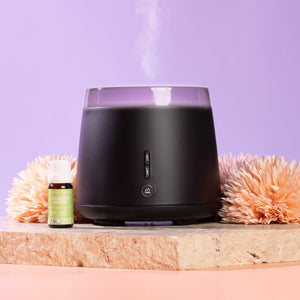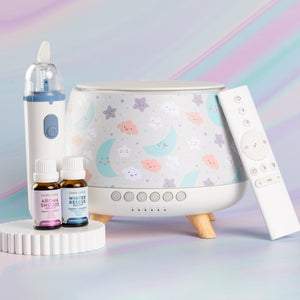Natural Approaches to Soothing Baby Discomfort: A Guide
That piercing cry in the middle of the night can make any parent's heart drop. You've checked the diaper, the feeding schedule, and the temperature, but your little one is still a crying baby. When you feel like you've tried everything, turning to gentle, time-tested methods can be a huge relief.
For first-time parents especially, the experience can feel overwhelming when you cannot figure out what is wrong. You are not alone in the search for answers to help your baby feel better. Many parents are looking for ways to comfort their babies without immediately reaching for medicine, which is why we've explored these compassionate and Natural Approaches to Soothing Baby Discomfort.
Table of Contents:
- What's Making My Baby So Fussy?
- Gentle Touch and Rhythmic Movement
- Using the Senses for Natural Approaches to Soothing Baby Discomfort
-
Help for Tummy Troubles
- Conclusion
What's Making My Baby So Fussy?
Before you can soothe your baby, it helps to understand what might be causing the discomfort. Babies cannot tell us what hurts, so we become detectives looking for clues. Common reasons for fussiness often include gas pains, teething, or simply feeling overstimulated by the big, bright world.
A gassy tummy is one of the most frequent issues for young infants, as their digestive systems are still maturing. Teething is another major milestone that, while exciting, can bring crankiness and drool. Sometimes, an unsettled baby is experiencing the dreaded witching hour, a period of fussiness that typically peaks in the late afternoon or evening.
If fussiness is severe or persistent, it could be colic crying, which is intense crying for several hours a day. It is always a good idea to speak with your child health nurse to rule out any potential health problems. As your baby grows, you will become more attuned to their specific cues.
Gentle Touch and Rhythmic Movement
Sometimes, the simplest solutions are the most effective. Your touch and presence are incredibly powerful tools for comforting your baby. Physical closeness and rhythmic motion can do wonders to calm a distressed little one, helping you apply a range of soothing strategies.
The Soothing Art of Baby Massage
A gentle massage can be a game-changer for a gassy baby. A warm tummy rub using slow, circular motions can help move gas bubbles along and offer relief. According to health experts at the Mayo Clinic, infant massage also improves sleep and reduces stress hormones.
This kind of gentle touch is a wonderful form of skin-to-skin contact that strengthens your bond and can be a peaceful part of a bedtime routine. To perform the I Love U stroke, trace the letter I down your baby's left side. Then, trace an inverted L from their right to left side and down, followed by an upside-down U from their lower right to left side. Always watch your baby's cues to see what they enjoy.
A Comforting Swaddle
Wrapping your baby snugly in a blanket, known as swaddling, can recreate the secure feeling of being in the womb. This simple act can help calm a fussy baby and prevent their natural reflex to startle from waking them up. A secure swaddle keeps their limbs from flailing, which can sometimes add to their agitation and interrupt their sleep patterns.
It is important to swaddle safely. The American Academy of Pediatrics advises that you should always place baby on their back to sleep, especially when swaddled. Also, be sure the swaddle is not too tight around the hips, as this can affect hip development.
Using the Senses for Natural Approaches to Soothing Baby Discomfort
Engaging your baby's senses in a gentle way can redirect their focus from discomfort. A warm bath, a calming scent, or a soothing sound can signal to their little bodies that it is time to relax. These are classic and effective calming techniques.
A Relaxing Warm Bath
Never underestimate the power of a warm bath. The gentle weightlessness of the water and the soothing temperature can help relax tight little muscles. This is especially helpful for general crankiness or teething pain.
You can add to the experience with a few drops of a calming, baby-safe infusion like chamomile. To protect your baby's delicate skin, ensure the room temperature is warm and use a gentle, fragrance-free soap to prevent dry skin. Proper skin care is important for your baby's comfort.
Calming Scents and Essential Oils
Certain scents are known for their calming properties. Diffusing a tiny amount of pure lavender or Roman chamomile essential oil can create a serene atmosphere. It is important to do this safely because a baby's respiratory system is delicate.
Always use a high-quality diffuser and only for short periods, like 15 to 20 minutes before sleep time. Never apply essential oils directly to a baby's skin. Before using any oils, talk to a healthcare professional, as guidelines stress heavy dilution and avoiding certain oils for young children.
- Lavender.
- Roman Chamomile.
- Dill.
- Mandarin.
The Comfort of Sound
Steady, low-level noise can be incredibly comforting for an infant. A white noise machine can mimic the constant sounds your baby heard in the womb. This can help block out sudden noises that might startle them and disrupt their sleep cycles.
You can also try humming softly or playing gentle, calming music. Your voice is one of the most reassuring sounds your baby knows. As your baby learn to associate these sounds with calm, it can help them develop better sleep skills over time.
Help for Tummy Troubles
Digestive issues are at the root of so much baby discomfort. Luckily, there are many simple, natural ways to help their tiny tummies feel better. Small adjustments to your feeding routine or trying different burping techniques can make a big difference.
Massage with Organic Tummy Oil
Lively Living’s Certified Organic Tummy Oil is a gentle, natural remedy to help soothe little tummies and ease discomfort. Made with premium organic ingredients, it can be massaged onto your baby’s tummy to calm fussiness and support relaxation. Recently awarded Best First Aid Product in the 2025 Bounty Baby Awards, this trusted oil is a safe and essential addition to every parent’s first-aid kit.
Better Burping Techniques
Sometimes, a trapped air bubble is all that stands between you and a happy baby. If the standard over-the-shoulder pat is not working, try a different position. Sit your baby upright on your lap, supporting their chest and head, and gently pat their back.
Another great method is to lay your baby on their tummy across your lap, as the gentle pressure can help release gas. A few minutes in this position after a feed might be all it takes. For breastfed babies, tummy troubles can sometimes be related to milk supply or something in the mother's diet, so keeping a food journal may help identify potential triggers.
| Position | How To Do It | Best For |
|---|---|---|
| Over the Shoulder | Hold baby against your chest so their chin is on your shoulder. Support them with one hand and pat their back with the other. | A classic and effective method for most babies. |
| Sitting Up | Sit baby on your lap facing away. Use one hand to support their chest and head, leaning them forward slightly. Pat their back. | Babies with good head control or who spit up frequently. |
| Across the Lap | Lay baby on their stomach across your lap. Support their head to keep it higher than their chest and pat their back. | Applying gentle pressure to the tummy to relieve gas. |
Remember to consider other simple causes of discomfort, too. A quick change nappy can solve fussiness instantly. Sometimes, just stepping outside for some fresh air can reset the mood for both you and your baby.
Conclusion
Parenting an unsettled baby is tough, but you have so many wonderful tools at your disposal. From the simple power of your touch to the gentle comfort of a warm bath, these methods can help you feel empowered. By exploring these Natural Approaches to Soothing Baby Discomfort, you can build a toolkit of trusted techniques to calm and connect with your little one.
Remember to trust your instincts, and always talk with a healthcare provider about any serious concerns. Every baby is different, so what works for one may not work for another. Be patient with yourself and your baby as you learn their individual needs and what brings them the most peace.



















